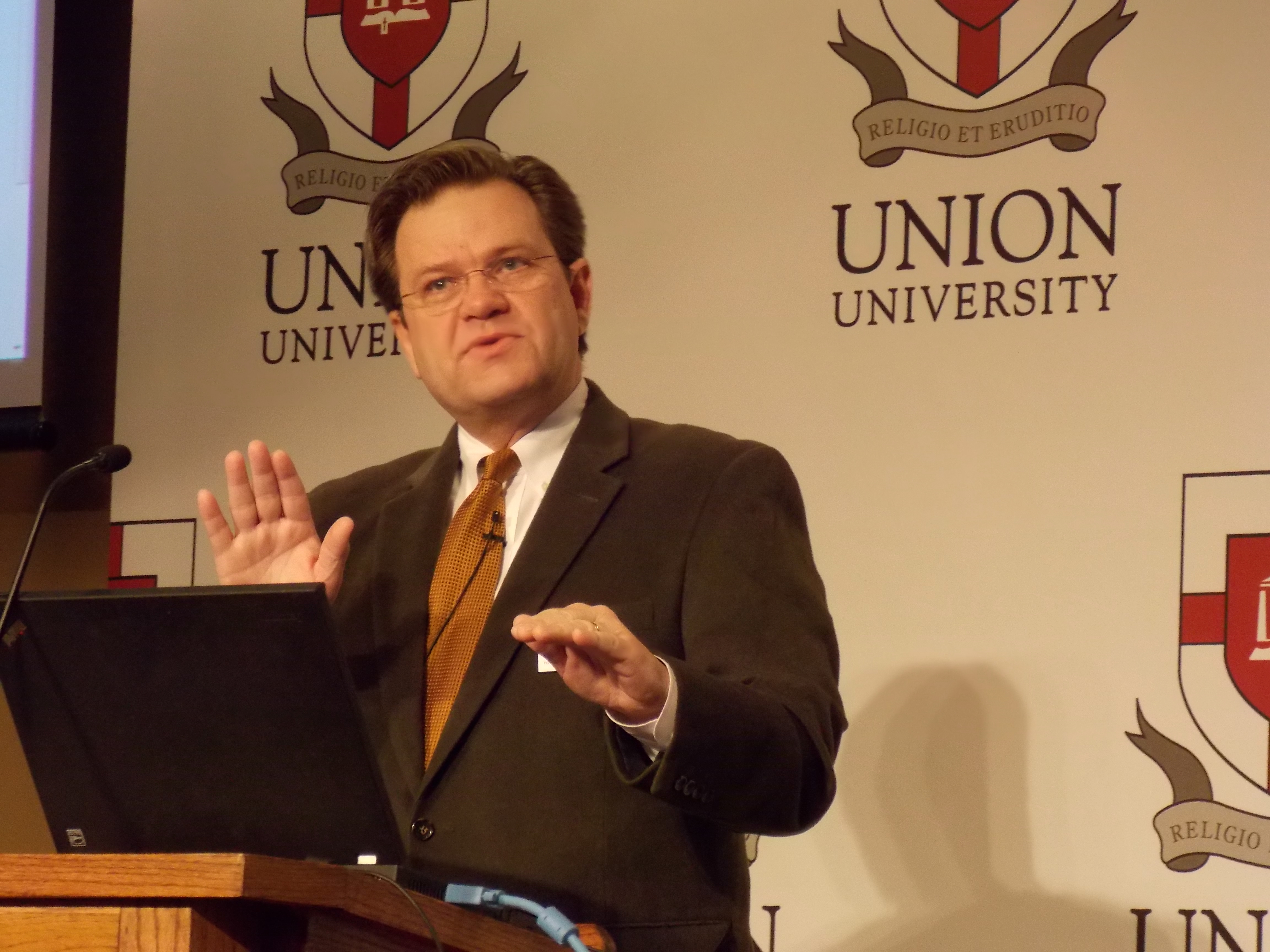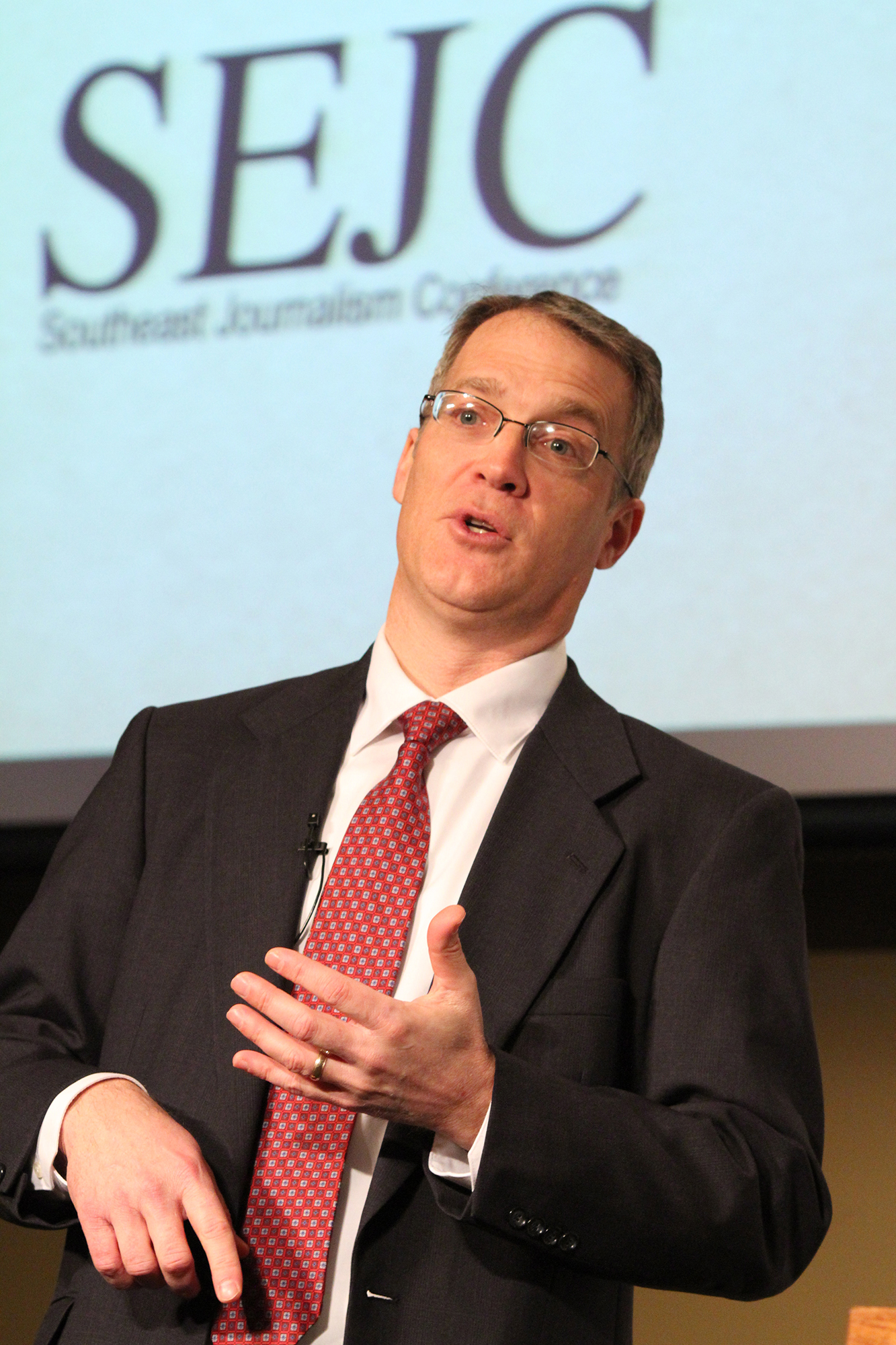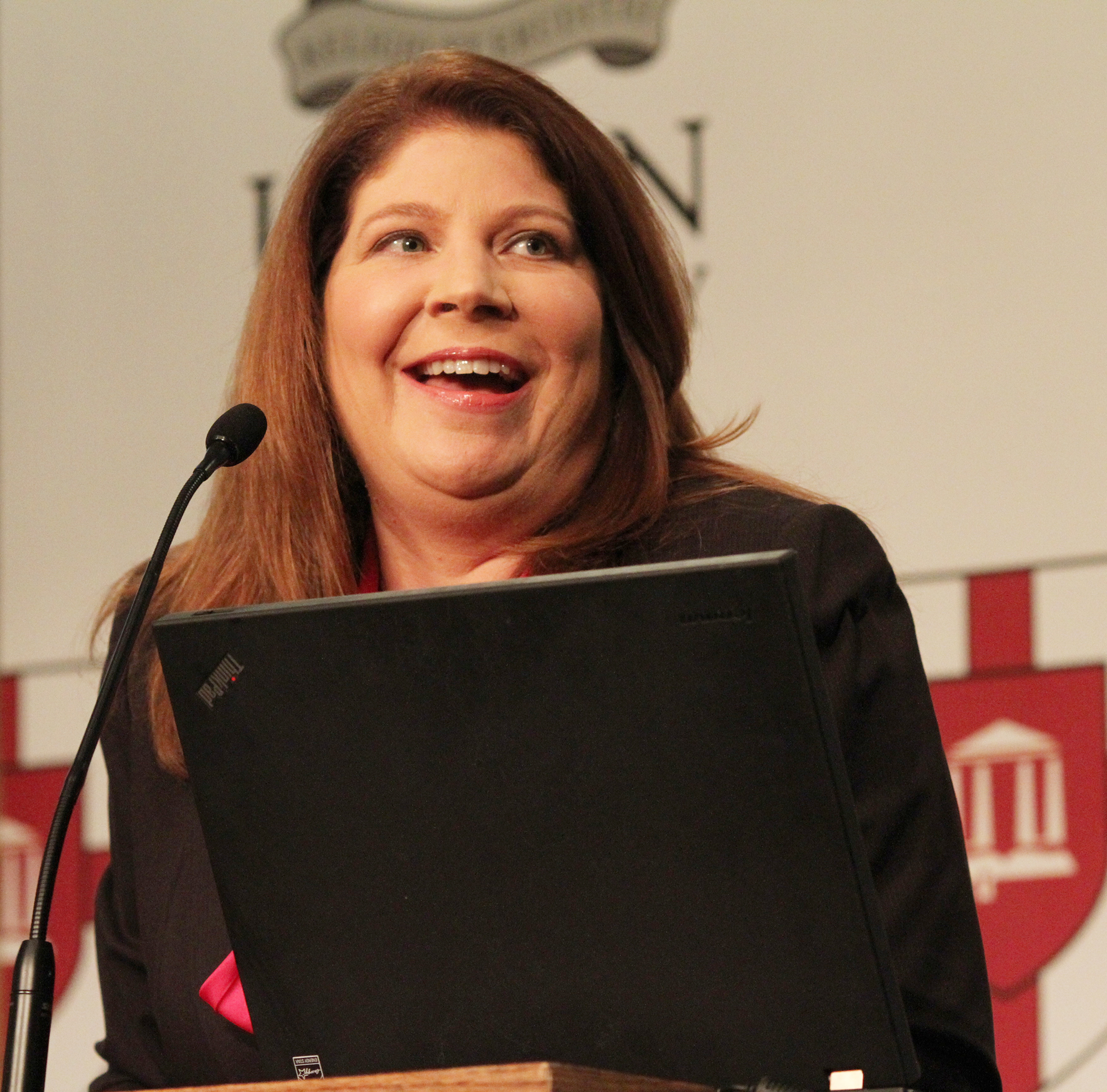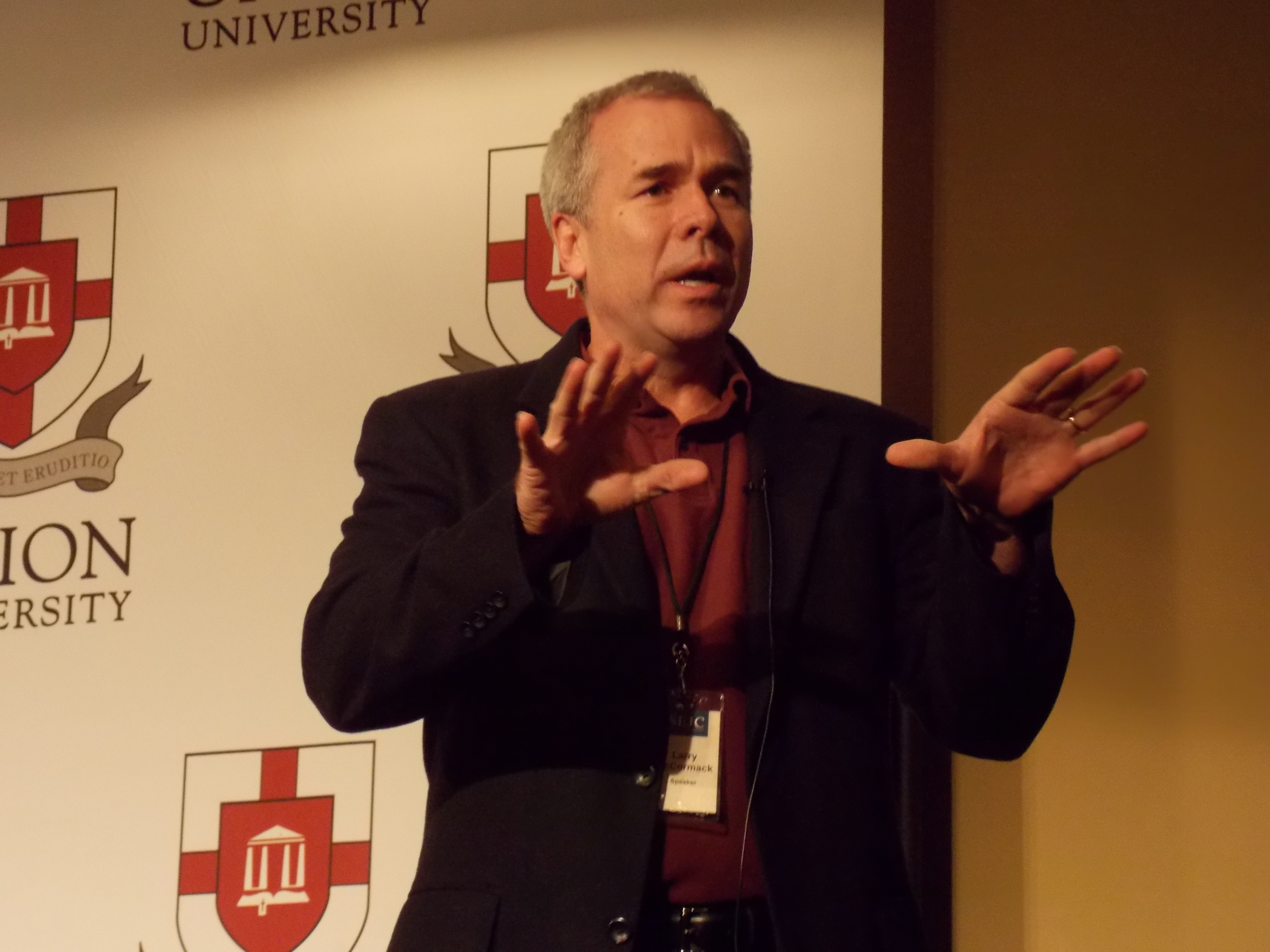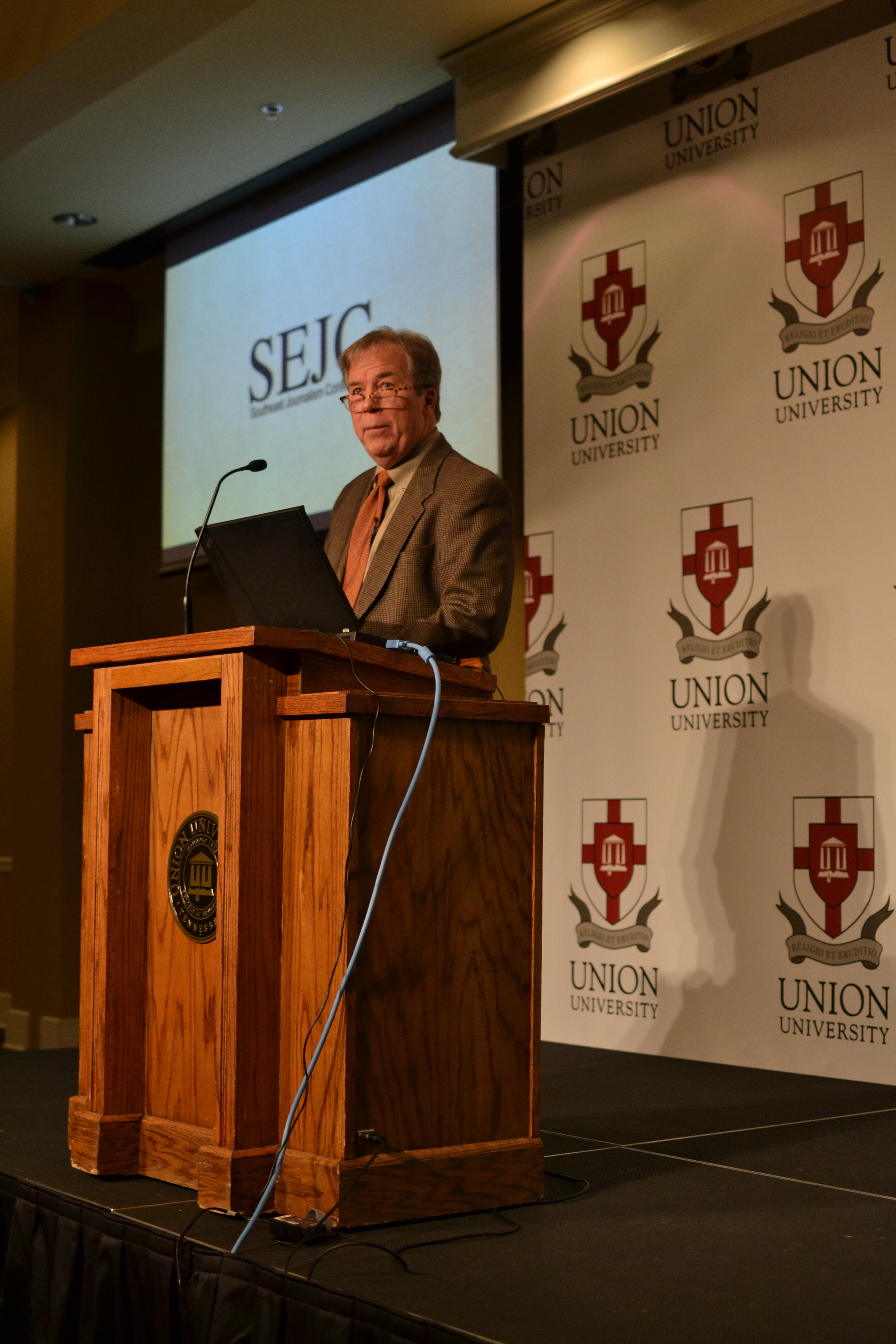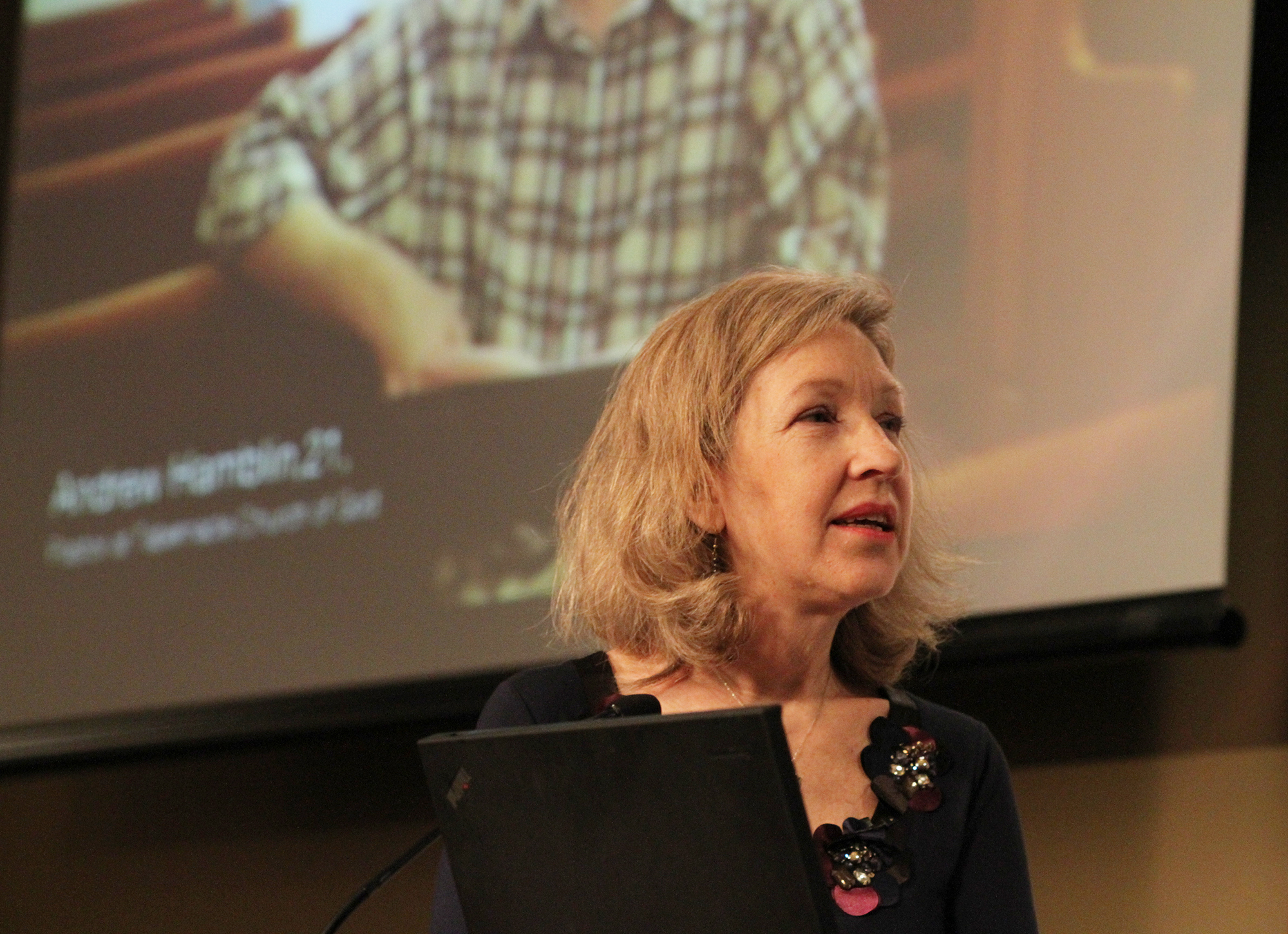The Southeast Journalism Conference held its 27th annual convention at Union University in Jackson, Tennessee, February 22-23, 2013.
176 students from 31 colleges were ranked in 30 categories as being among the “Best of the South” in the SEJC’s annual journalism awards competition. Southeastern Louisiana University took home Journalism Championship medals for the team effort in the onsite competition.
The SEJC competitions are open to the organization’s member schools from eight states — Alabama, Arkansas, Florida, Georgia, Louisiana, Mississippi, North Carolina and Tennessee —recognized in its constitution as eligible to enter the contests.
The purpose of the SEJC Best of the South contest is to function as a journalism teaching-tool, as well as a competition. All entries are given a rating, and judges are encouraged to provide comments and professional advice. The ratings and commentaries are given to each school’s faculty delegate to distribute to his or her students who enter, regardless of whether their entry won top recognition. A comprehensive list of this year’s winners is below. For any questions concerning the 2012 “Best of the South” Competition, please contact Traci Mitchell attlmitchell6@sa.ua.edu
The onsite competition puts student journalists’ talents to the test in competitions at the conference and awards individuals certificates and points for their school teams that accumulate to recognize one team as the Journalism Champions.
2012 “Best of the South” Winners
| News Writer | ||
| 1st (tie) | Brian Wilson | Belmont University |
| 1st (tie) | Christopher Whitten | University of Memphis |
| 3rd | Michelle Corbet | University of Memphis |
| 4th | A.J. Mercincavage | Lynn University |
| 5th | Kaitlyn Byrne | Mississippi State University |
| 6th | Ashley Chaffin | University of Alabama |
| 7th | Tanya Giraldo | Arkansas State University |
| 8th (tie) | Cole Avery | University of Louisiana, Monroe |
| 8th (tie) | Emily West | Middle Tennessee State University |
| 10th | LaToya Pickett | Tennessee State University |
| Feature Writer | ||
| 1st | Lauren Ferguson | University of Alabama |
| 2nd | Jessica Adkins | Belmont University |
| 3rd | Amelia Krauss | Union University |
| 4th | Gina Cherelus | Florida A&M University |
| 5th (tie) | Hayley Blair | Auburn University |
| 5th (tie) | Elizabeth Rose | University of La-Lafayette |
| 7th | Caitlin LaFarlette | Arkansas State University |
| 8th | Maya Jones | Xavier University |
| 9th (tie) | Laura Apperson | Georgia State University |
| 9th (tie) | Zachary LaSalle | University of Louisiana, Lafayette |
| Arts & Entertainment Writer | ||
| 1st (tie) | Ashley Hinson | University of La-Lafayette |
| 1st (tie) | Emma Herrock | University of La-Monroe |
| 3rd | Cory Woodroof | Lipscomb University |
| 4th | Mary B. Sellers | University of Mississippi |
| 5th | Jane Horne | Middle Tennessee State University |
| 6th | Courtney Boyd | Georgia State University |
| 7th | Catherine Ragusa | Southeastern Louisiana University |
| 8th | Caleb Hennington | Arkansas State University |
| 9th | Te Duffour | University of West Alabama |
| 10th (tie) | Jared Dowling | University of Alabama |
| 10th (tie) | Ashley Gressett | Mississippi College |
| Opinion/Editorial Writer | ||
| 1st | Chris Shattuck | Georgia State University |
| 2nd | Chelsea Boozer | University of Memphis |
| 3rd (tie) | Amie Rolland | Louisiana Tech University |
| 3rd (tie) | Adam Quinn | Samford University |
| 5th (tie) | John Jerome Thompson | Arkansas State University |
| 5th (tie) | Clint Simpson | Arkansas State University |
| 5th (tie) | Jasmine Mitchell | Florida A&M University |
| 8th (tie) | Lyndsey Ruble | Harding University |
| 8th (tie) | Katherine Burgess | Union University |
| 10th | Phil McCausland | University of Mississippi |
| Sports Writer | ||
| 1st | Eric Single | Vanderbilt University |
| 2nd | Alex Hubbard | Middle Tennessee State University |
| 3rd (tie) | Corry Mulligan | Samford University |
| 3rd (tie) | DeRon Talley | University of La-Monroe |
| 3rd (tie) | Austin Miller | University of Mississippi |
| 6th | Alexis Hosticka | Harding University |
| 7th (tie) | Matt Chaffin | Harding University |
| 7th (tie) | Katie de la Rosa | University of Louisiana, Lafayette |
| 7th (tie) | Caleb Odom | Troy University |
| 10th | Marc Torrence | University of Alabama |
| Special Events Reporter | ||
| 1st | Adam Mills & Colby Leonard | University of Alabama |
| 2nd | Terah Boyd | Georgia State University |
| 3rd | Rebecca Alvarez | Louisiana Tech University |
| 4th | Kayla Paine | Arkansas State University |
| 5th | Candace Barnette | Mississippi State University |
| 6th | Anne Marie Van Casteren | Lynn University |
| Press Photographer | ||
| 1st | Srdjan Marjanovic | University of La-Monroe |
| 2nd | Rebecca Croomes | Auburn University |
| 3rd | Joshua Vaughn | Austin Peay State University |
| 4th | Ciley Carrington | Grambling University |
| 5th | Austin McAfee | University of Mississippi |
| 6th (tie) | Chris Honiball | Vanderbilt University |
| 6th (tie) | Ashel Parsons | Harding University |
| 6th (tie) | Patrick Duffy | Georgia State University |
| 6th (tie) | Caitlin Trotter | University of Alabama |
| 10th | Joseph Patrick | Tennessee State University |
| News Graphic Designer | ||
| 1st | Christopher Martin | Southeastern Louisiana University |
| 2nd | Aysha Johnson | Georgia State University |
| 3rd | Alex Cline | University of Tennessee |
| 4th | Christopher Do | Middle Tennessee State University |
| 5th (tie) | Michelle McDaniel | University of Louisiana -Monroe |
| 5th (tie) | Kalsey Stults | Tennessee Tech University |
| 7th (tie) | Whitney Hendrix and Sarah Grace Moorehead | University of Alabama |
| 7th (tie) | Ruth Augustin | Lynn University |
| 9th (tie) | Kristen Ellender | Nicholls State University |
| 9th (tie) | Zack Orsborn | Mississippi State University |
| News/Editorial Artist | ||
| 1st | Kelsey Hargrove | University of La-Monroe |
| 2nd | Josh Clark | University of Mississippi |
| 3rd | David Barrentine | Arkansas State University |
| 4th | Christy Walker | Austin Peay State University |
| 5th | Brandon Murray | Troy University |
| Newspaper Page Layout Designer | ||
| 1st | Kristen Webb | Vanderbilt University |
| 2nd (tie) | Anna Yang | Georgia State University |
| 2nd (tie) | Holly Jay | Union University |
| 4th | Marilyn Ferrell | Georgia College & State University |
| 5th (tie) | Emily Roland | University of Mississippi |
| 5th (tie) | Melody Kitchens | Auburn University |
| 7th (tie) | William Housley | Tennessee Tech University |
| 7th (tie) | Emma Crawford | Mississippi State University |
| 9th | Lyndsey Ruble | Harding University |
| 10th (tie) | Ross Landry and Erica Falgout | Nicholls State University |
| 10th (tie) | Molly Bowman | Louisiana Tech University |
| 10th (tie) | Kristin Jaggers | Austin Peay State University |
| Magazine Page Layout Designer | ||
| 1st | Benjamin Hurston | University of Mississippi |
| 2nd | Daniel Roth | University of Alabama |
| 3rd | Chidozie Acey | Florida A&M University |
| 4th | Elizabeth Cassada | Samford University |
| Magazine Writer | ||
| 1st (tie) | Marc Torrence | University of Alabama |
| 1st (tie) | Bracey Harris | University of Mississippi |
| 3rd | Morgan Grain | Florida A&M University |
| 4th | Allison Hubbard | Samford University |
| 5th | Beth Byrd | Union University |
| TV Hard News Reporter | ||
| 1st | Kristen Swilley | Florida A&M University |
| 2nd | Chrissy Carter | Southeastern Louisiana University |
| 3rd | Courtney Steele | Troy University |
| 4th (tie) | Quinn Panganiban | Tennessee State University |
| 4th (tie) | Gerard Manogin | University of Mississippi |
| T4th | Lauren Holt and Lauren Fulton | Mississippi State University |
| TV News Feature Reporter | ||
| 1st | Baillee Majors | Troy University |
| 2nd | Alvin Barrilleaux | Nicholls State University |
| 3rd | Kelli Volk | Tennessee State University |
| 4th | Aryeonne Johnson | Georgia State University |
| 5th | Megan McKeown | Mississippi State University |
| 6th | Brooke Bascle | Southeastern Louisiana University |
| 7th | Niekeisha Pryce | Florida A&M |
| 8th | Hannah Riley | University of West Alabama |
| 9th | Lauren McLaughlin | University of Mississippi |
| 10th | Tierra Robinson | University of West Alabama |
| Radio News Feature Reporter | ||
| 1st | Janea Judge-Hemans | University of La-Lafayette |
| 2nd | Liz Komoromi | Lipscomb University |
| 3rd | Aria Aaron | Florida A&M University |
| 4th | Blair Blanchard | University of Louisiana, Lafayette |
| 5th | Wil Herrmuth | Tennessee State University |
| 6th | Tiffany Logan | University of Tennessee, Martin |
| 7th | Miya M. Jefferson | Tennessee State University |
| 8th | Kelsey Rogers | Troy University |
| Radio Journalist | ||
| 1st | Nicholas Andrews | University of Mississippi |
| 2nd | Jessica L. Taylor | University of La-Lafayette |
| 3rd (tie) | Bethany Meeks | University of Tennessee, Martin |
| 3rd (tie) | Crystal Jordan | Florida A&M University |
| 5th | Matthew Doyle | Southeastern Louisiana University |
| Television Journalist | ||
| 1st | Ashley Bull | Nicholls State University |
| 2nd | Chrissy Carter | Southeastern Louisiana University |
| 3rd | Cody Long | Georgia State University |
| 4th | Judson Garner | Troy University |
| 5th | Kelli Volk | Tennessee State University |
| 6th | Hannah Riley | University of West Alabama |
| 7th (tie) | Stephen Quinn | University of Mississippi |
| 7th (tie) | Kristen Swilley | Florida A&M University |
| 9th | Nicolette Carney | Lipscomb University |
| 10th (tie) | Chenelle Terry | Samford University |
| 10th (tie) | Jesse Pope | Mississippi State University |
| Advertising Staff Member | ||
| 1st | Sabastian Wee | Georgia State University |
| 2nd | Kristen Saltzman | University of Mississippi |
| 3rd | Lane Davis | University of La-Monroe |
| 4th | Farrah Miller | Mississippi State University |
| 5th | Rachel Montoya | Southeastern Louisiana University |
| 6th | Channing Montgomery | Grambling State |
| 7th | Kasey Strickland | Samford University |
| 8th | Kaseril Suwaratan | Troy University |
| 9th | Jen Hoffman | Georgia College and State University |
| 10th | Bridgette Buchanan | Tennessee Tech University |
| Journalism Research Paper | ||
| 1st | Anna Cox | Samford University |
| 2nd | Lesley Rivers | Southeastern Louisiana University |
| 3rd | Alicia Johnson | Georgia State University |
| 4th | Kaley Winstead | Mississippi College |
| Public Service Journalism | ||
| 1st | Vanderbilt University | |
| 2nd | University of Memphis | |
| 3rd | University of Alabama | |
| 4th | University of West Alabama | |
| 5th | Louisiana Tech University | |
| 6th | University of Louisiana, Lafayette | |
| 7th | Southeastern Louisiana University | |
| College Audio News | ||
| 1st | Tennessee State University | |
| 2nd | Georgia State University | |
| 3rd (tie) | Lipscomb University | |
| 3rd (tie) | University of La-Lafayette | |
| 5th (tie) | University of Tennessee, Martin | |
| 5th (tie) | Southeastern Louisiana University | |
| College Video News | ||
| 1st | Southeastern La. University | |
| 2nd | Troy University | |
| 3rd | University of Mississippi | |
| 4th | Georgia State University | |
| 5th | University of West Alabama | |
| 6th | Mississippi State University | |
| 7th | Lipscomb University | |
| 8th | Lynn University | |
| 9th | Samford University | |
| 10th | Tennessee Tech University | |
| College Magazine | ||
| 1st (tie) | Samford University | |
| 1st (tie) | Tennessee Tech University | |
| 3rd | University of Alabama | |
| 4th (tie) | University of Tennessee, Martin | |
| 4th (tie) | Louisiana Tech University | |
| 6th | Florida A& University | |
| College Newspaper | ||
| 1st | University of Alabama | |
| 2nd | Auburn University | |
| 3rd | Vanderbilt University | |
| 4th | University of Mississippi | |
| 5th | University of Tennessee | |
| 6th | Xavier University | |
| 7th (tie) | Harding University | |
| 7th (tie) | Georgia State University | |
| 9th | Belmont University | |
| 10th | Arkansas State University | |
| College Website | ||
| 1st | University of Alabama | |
| 2nd | University of Mississippi | |
| 3rd | Harding University | |
| 4th | University of Tennessee | |
| 5th | Lynn University | |
| 6th | Georgia College & State University | |
| 7th | Louisiana Tech University | |
| 8th | Vanderbilt University | |
| 9th (tie) | Union University | |
| 9th (tie) | Austin Peay State University | |
| Multimedia Journalist | ||
| 1st | Margaret Ann Morgan | University of Mississippi |
| 2nd | Aura Cruz | Lynn University |
| 3rd (tie) | Autumn Allison | Belmont University |
| 3rd (tie) | Nicholas Finch | University of West Alabama |
| 5th | Alex Brown | Union University |
| 6th | Jadaun Sweet | Florida A&M University |
| 7th | Cheril Nathaniel | Southeastern Louisiana University |
| College Journalist of the Year | ||
| 1st | Will Tucker | University of Alabama |
| 2nd | Cole Avery | University of La-Monroe |
| 3rd | Chrissy Carter | Southeastern Louisiana University |
| 4th | Emily Roland | University of Mississippi |
| 5th (tie) | Elizabeth Rose | University of Louisiana, Lafayette |
| 5th (tie) | Cody Muzio | Troy University |
| 5th (tie) | Brian Wilson | Belmont University |
| 8th (tie) | Lindsey Blakely | Arkansas State University |
| 8th (tie) | Patrick Boyd | Louisiana Tech University |
| 10th | Becca Andrews | Middle Tennessee State University |
| College Radio Station | ||
| 1st | Tennessee State University | |
| 2nd | University of Tennessee, Martin | |
| 3rd | Lipscomb University | |
| 4th | Southeastern Louisiana University | |
| 5th | University of Mississippi | |
| College TV Station | ||
| 1st (tie) | Southeastern Louisiana University | |
| 1st (tie) | Troy University | |
| 3rd | Tennessee State University | |
| 4th | University of Mississippi | |
| 5th | Florida A&M University | |
| 6th | Lipscomb University | |
| 7th | Samford University | |
| 8th | Georgia State University | |
| 9th | Vanderbilt University | |
| 10th | Mississippi State University | |

